Addendum to my chapter on windows and doors.
This addendum is added to the beginning of my chapter on windows and doors, which you can find here:
It is with importance, if not urgency, that I update my chapter on windows and doors. Rotted framing and windows cause untold millions of dollars in repairs yearly, and can be avoided.
This part about sill pan flashing is from my June 2025 home page:
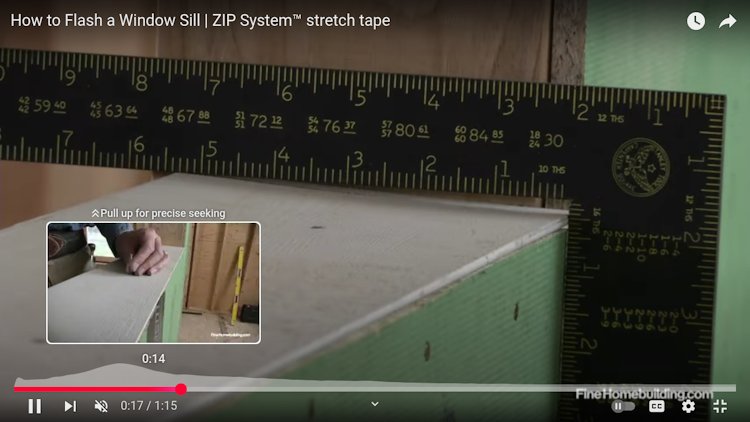
Sill pan flashing
What you see is a screenshot from a video from Zip Wall on sill flashings. A piece of siding is put on first. This allows an angle or pitch away from the house.
This video from the Zip System people is only just over a minute long.
Nearly every window and door manufacturer these days recommend sill pan flashings. These recommendations are largely overlooked. Practically every window and door has an installation booklet taped on. If this is lost, a pdf file can be downloaded from the manufacturer's website.
These sill pan flashings are of critical importance on sliding patio doors. Most sliding doors are made with weep holes on the bottom track to allow standing water to escape. On a wood framed house the water runs right down into the framing below, rotting the framing. This is a frequently done stupid thing.
We stuccoed a house in Northeast Washington where the sill pan flashing was put on backwards under a large, expensive sliding door. Every time it rained, water ran into the house because the flashing was angled the wrong way. They even make sill pan flashings pre-made with a slope. After the owner called for days with telephone terrorism a crew showed up and took out and reset the door. It took 7 people all day and unto the night to reset the door.
Leaving a gap around the window and caulking is the road to ruined framing.
The piece below is from my July 2024 issue
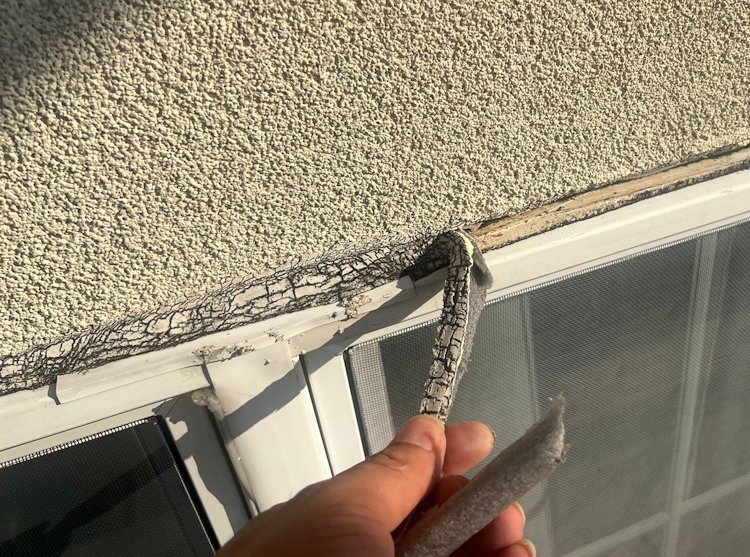
These houses rot below the bottom corners of the window. First of all, the windows are pitched into the wall, instead of away from the wall. A gap is left around the window using casing bead to support the one coat stucco. The casing bead is 1/2 inch, and not the 3/4 inch like we use. Water that penetrates the stucco trickles dawn an is trapped by the big wide gob of caulking. The water trapped in the trough behind the top of the window runs down the sides of the window and rots the framing in the bottom corners of the window. To make matters worse, the gap is filled partially with absorbent foam backer rod which absorbs and traps water. For more details, check out the video on the July 2024 home page.
These windows are really designed to have trim around the windows and flashing over the top trim. If trim isn't used, Andersen windows can send flashing to go over the window, angled correctly, and even the same color of the window. We used pre made flashing from Home Depot. Just imagine, some inexpensive flashing would have kept this house from rotting.
The caulking does more harm than good. Also, All the caulking on these houses shrinks and cracks and just looks terrible.
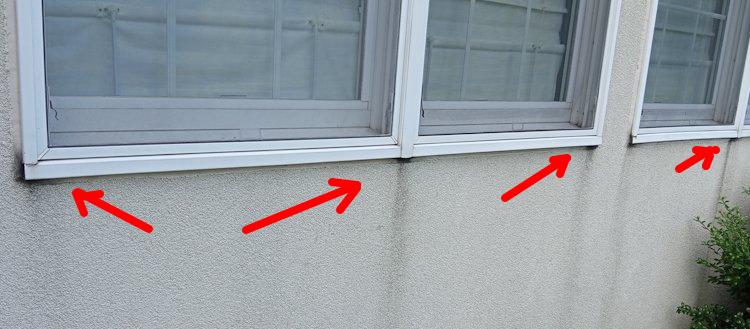
These windows by Andersen leak at the post between the window. The water and mildew on the outside indicate what the wall looks like on the inside: wet and black.
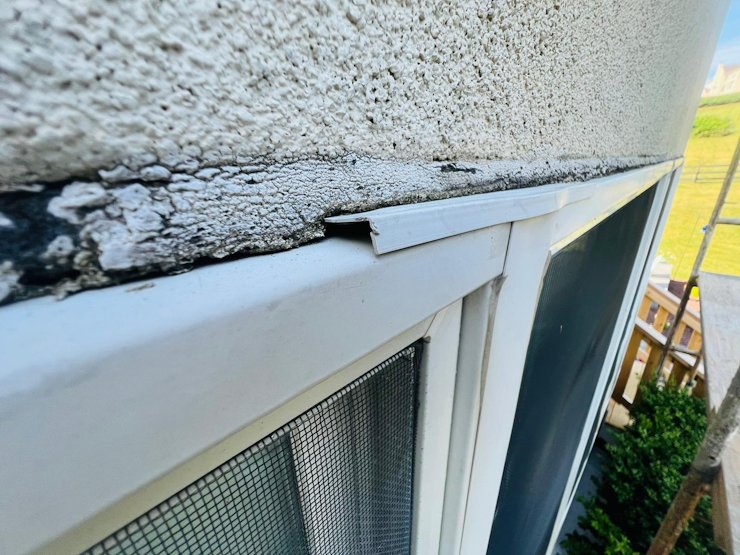
Tell me this is worth a damn. Andersen makes a plastic cover to cover the top of the post. These do more to funnel the water in than to keep it out. A simple window cap flashing, pitched down away from the house would have corrected the leak. Toll Brothers may have to spend $ 3 for flashing. Tell me this caulking looks beautiful. What kind of idiots do work like this ? America's luxury homebuilder.
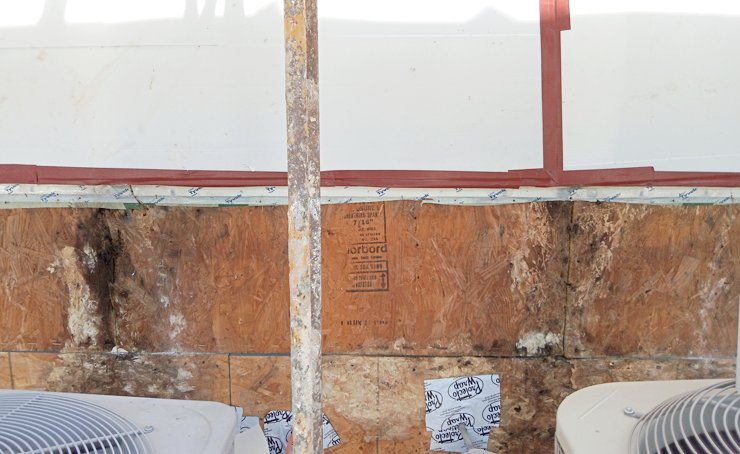
After the stucco is removed, You can see the rot under these posts.
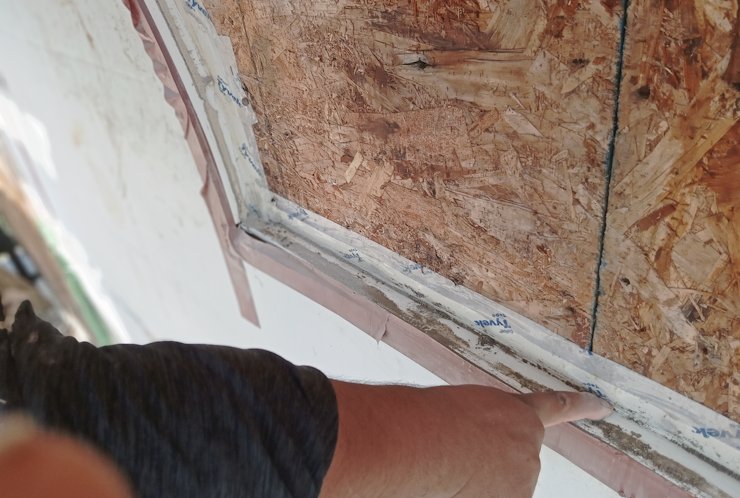
Here's a view of the water trough formed behind the window. The water that penetrates the stucco collects here, then runs down the sides of the window and rots the framing below. The wagon wheel window is also multi part with leaking posts. We fixed this with protecto wrap tape and flashing. I promise it won't leak ever again.
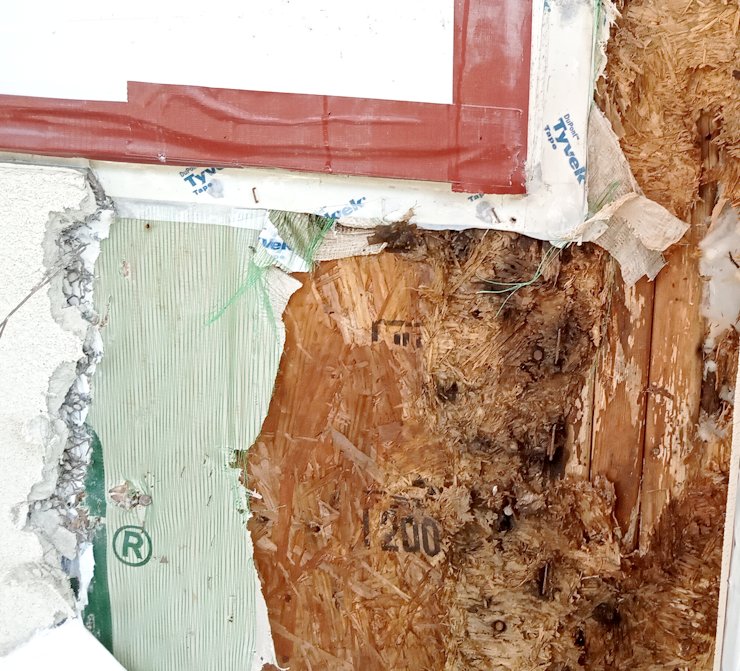
The OSB has rotted off the bottom corners of the window exposing the studs. Toll Brothers slogan is "Quality by design". They don't tell you it's Low quality by design.

Window was fixed by cutting off the stucco above the window. We put on a drip flashing angled down so water exits out over the window, and not into the window. Top of flashing is sealed with tape and a piece of lath put on to support the patch.
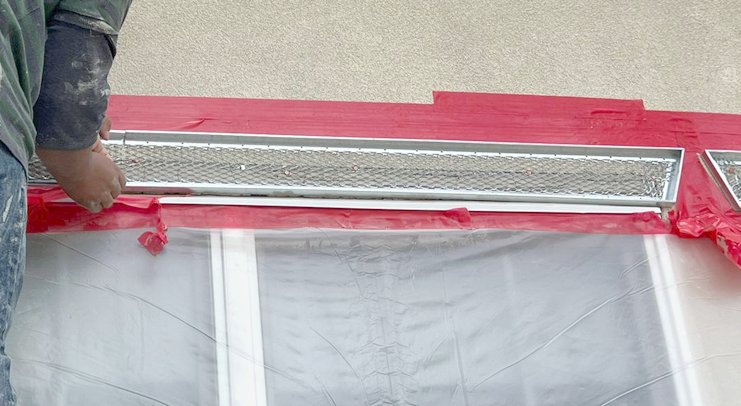
We hid the patch by making decorative bands. Note the gap over the flashing for a water exit.
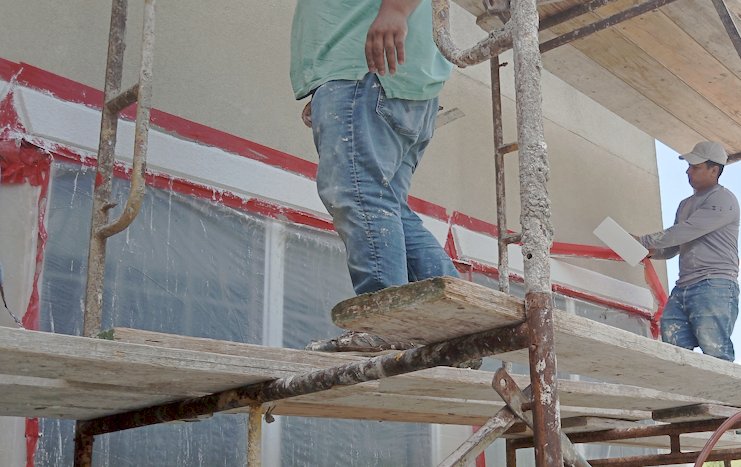
Bands are filled and finished with white. White was used for a contrast. If the color we put on didn't match exactly, the repair would be obvious.
I see this kind of work, like a gap around the window using casing bead filled with caulk, non existent flashing, windows angled into the wall, etc. I can't change the world unless someone reads this. If one person reads this and changes the procedure for the better, I will save somebody thousands of dollars. Now you see what I mean about the blind man walking toward the ditch.
This piece below is from my September, 2024 home page:
This 8,000 square foot house is near the Toll Brothers house above. It was raining real hard when I was there, so my phone got wet and kept cutting off. There was water pouring out of the soffits. This house had the same backwards drip edges as the Toll house. This is another good example of leaving a gap around the window and filling with caulking. The only solution as I see it is to rip the one coat stucco off the whole house and do it all right, with new flashing, tarpaper, drip edges, 3/4" of cement stucco, etc.
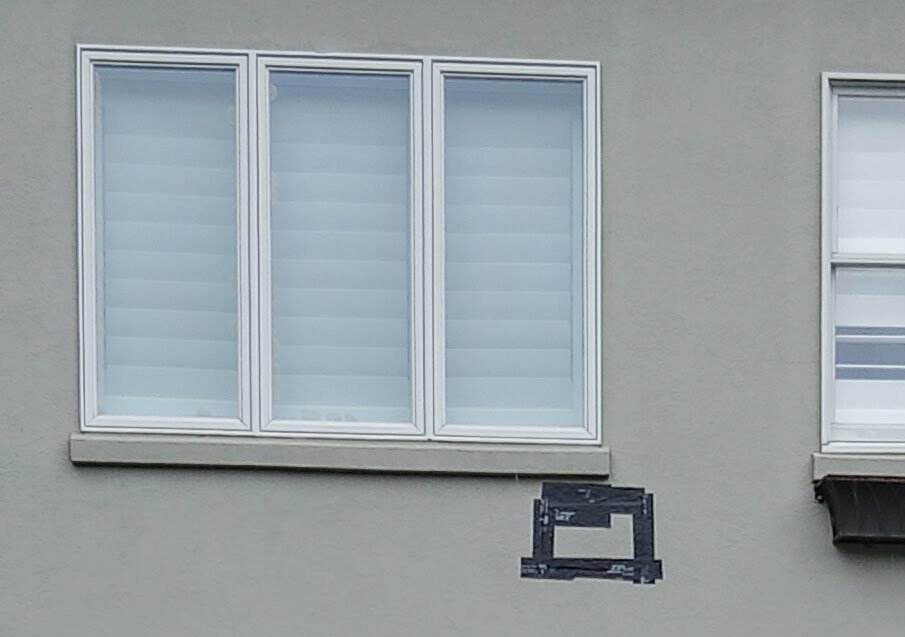
Exploratory holes are cut under bottom corners of the windows to reveal rot. The condition is the same as last issue. Windows have a gap around the edge formed by casing bead and filled with caulking. Water is trapped at the top of the window, runs down the sides and saturates under the bottom corners of the windows.
The EIFS band under the window absorbs and traps water, also. Note how the wall is saturated. I came out here in the pouring rain. My phone got wet so I couldn't take any more pictures or videos. There was water pouring out of the soffits. The whole edge of the roof is leaking due to lack of a drip edge, gutter apron, starter strip, much less ice shield.
The piece below is from my June 2024 issue:
More idiots at work:
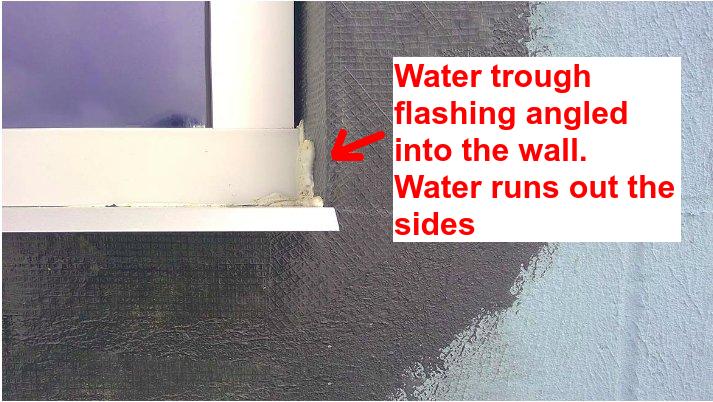
Walls and Ceilings magazine was a great magazine at one time. I am shocked they would publish this photo of backwards flashing.
Here's a link to the article....
I first subscribed to Walls and Ceilings over 30 years ago. I still have some of the print editions with articles on plastering and exterior stucco.
W&C started as a magazine for plastering in the 1950's. W&C also promoted the "knock on the wall" campaign in the early sixty's, which promoted plaster over cheap drywall.
I stopped renewing my free subscription because there is no more credible information about plastering, only EIFS, drywall, and insulation. They publish only what their advertisers want. My last invitation to subscribe asked me to select a category. No plaster, but EIFS/stucco, that is EIFS slash stucco. This isn't my category. EIFS isn't stucco, even though it is promoted by Walls and Ceilings as such.
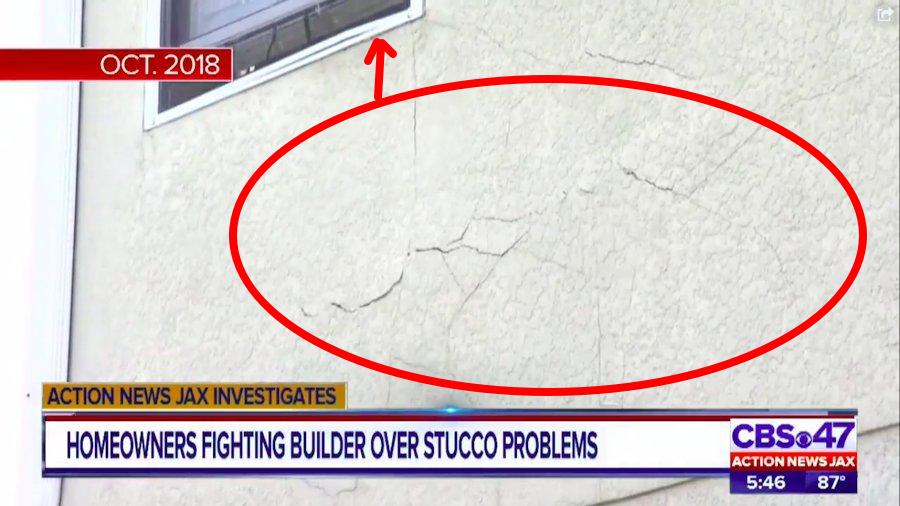
I got this screenshot from the youtube video below. I had to chime in. The stucco may or may not have been improperly installed. The cracking and loose area seem to be radiating out from the bottom corner of the window. This is where we find rot from faulty window installation, under the bottom corners of the windows. This is probably due to no flashing over the window, or the top of the window is angled back toward the wall. Water running down the sides of the window cause the rot. Also there is no sill. Probably the windows aren't sealed on the backside. This failure is caused by poor window installation,
More idiots:
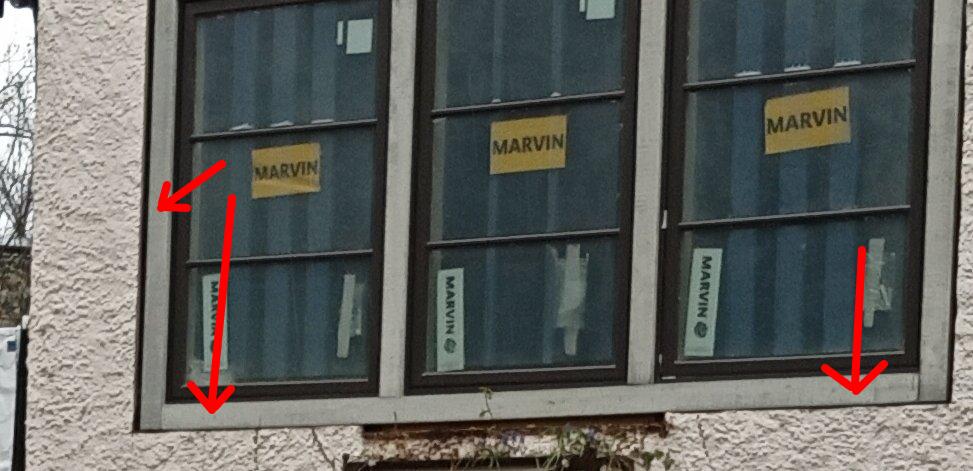
Water runs freely down new window and window trim into the wall. This passes inspection in Washington, DC.